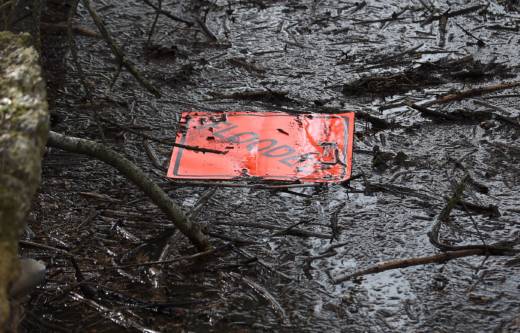By Wednesday, the 2016-17 index, boosted by the epic deluges of December, January and February, had reached 88.2.
“An average water year [for the index] is 50 inches and in those three months we got 56 inches,” Mike Anderson, California’s state climatologist,” told KQED’s Craig Miller. “So it’s just a truly impressive winter to wade through.”
Asked whether he was hoping to see the 1982-83 record broken, Anderson didn’t hesitate.
“Yes,” he said.
And as the latest in a series of spring storms swept across Northern California overnight, the index hit 89.7 on Thursday morning, establishing a new record. On Friday, it was up to 90.2.
That’s the all-time high — for now. But with the prospect of more rain on the way, the index is certain to keep rising. Models show a chance for three weakish storms to hit Northern California over the next 10 days, and the region has a shot at more rain and snow through at least the end of May.
If you’re wondering about the extent of the very heavy precipitation reflected in the eight-station index, well, so were we. A check of the California-Nevada River Forecast Center’s running total of water-year precipitation shows 37 sites, almost all in Northern California, with 100 inches or more of rain and snow since Oct. 1.
The water-year leader so far is a place called Four Trees in the Feather River basin: 152 inches and counting. Venado, the hillside location west of Healdsburg in northern Sonoma County, comes in with a paltry 148.3 inches. Ben Lomond, a reliably rainy location in the Santa Cruz Mountains, has about 110.
Several other indices of seasonal precipitation are far above average for this time of year if not in record territory.
The state’s five-station San Joaquin index, which records precipitation in the Stanislaus, Tuolumne, Merced and San Joaquin, stands at 68.2 inches and 194 percent above average. The 1982-83 record is 77.4.
The six-station index in the Tulare Basin, which includes the Kings, Kaweah, Tule and Kern river basins, is 45 inches, 178 percent of normal and about 150 percent of average for the entire water year. The record, 56.3, was set in 1968-69.
The state’s mountain snowpack, which as a rule of thumb stores about one-third of the water the state uses in an “average” year, is far above normal, too. On Thursday, snow water content was 154 percent of its April 1 average in the northern Coast Ranges and Sierra, 180 percent in the central Sierra and 164 percent in the southern Sierra.
The 1982-83 El Niño season set the snowpack record, with well over 200 percent of April 1 snowfall being recorded throughout the range.

